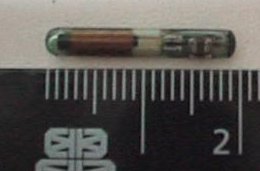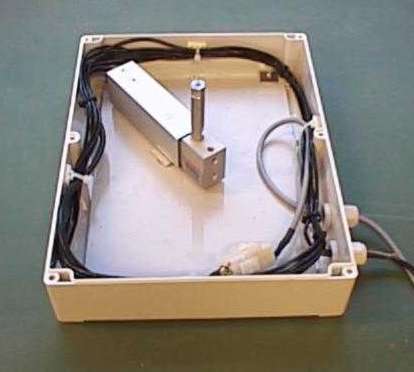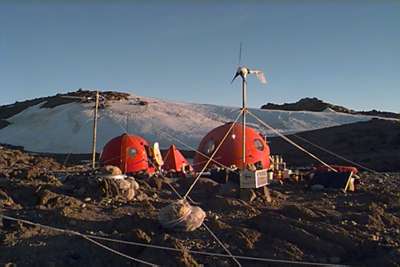
AWIN, an automatic weigh and identification nest-system to study petrels in Antarctica
J.C.S. Creuwels, W. van der Veer and J.A. van Franeker
Marine and Coastal Research, Alterra, Den Burg (Texel), The Netherlands
An automatic weigh and identification nest-system (AWIN) has been developed to study two closely related petrel species in Antarctica. It has been used for a study on the breeding and foraging ecology of the Antarctic petrel (Thalassoica antarctica) and the Southern fulmar (Fulmarus glacialoides) on Ardery Island, Antarctica (66S, 110E). In three consecutive seasons (1996-1999), 30 to 45 artificial nests (Figure 1) have been operational each year in two study colonies on the island. The nests in these colonies were connected with the datalogger-computer in the field camp with cables up to 800 m away.

Figure 1. Antartic petrel on artificial nest.
During the breeding seasons, about every 5 minutes data were collected from each nest on the identity and weight of the bird(s) present on the nest. These data were immediately visible on the screen of the datalogger computer in the field camp. To identify individual birds a Passive Identification Tag (PIT) technique was used. Electronic tags, 'transponders', were moulded in a 19-mm glass tube (Figure 2) and had been implanted subcutaneously along the upper leg of the adult birds. Each transponder has a unique number, which is detected by an antenna inside the nest-unit. As transponders do not consist of a battery, they provide life-long identification of the bird.

Figure 2. A 19-mm transponder.

Figure 3. Antenna and load cell inside a nest unit.
A high precision load cell was used to weigh the bird(s) on the nest (Figure 3). Weight measurements were accurate to 1 g. Each weigh session of a nest consisted of five repeated weighings in just a couple of seconds. The average of these five repeated measurements was used as the weight of the nest. Thus, the reliability of each weight measurement was given as the calculated standard deviation of the five measurements.
AWIN has low power requirements and is powered by solar and wind energy, especially designed for remote areas (Figure 4). It continues collecting data in unfavorable weather conditions and at night. Birds easily adapted their new nests and no changes in breeding success have been recorded. The nest system enabled us to collect detailed information on attendance patterns, body weights, chick provision rates, chick meal sizes and chick growth, without the disturbance by regular manual weighing or by visual checking. In a case of an electronic failure, the disturbance is also minimised as the electronic control unit was situated in a box away from the nest unit where the birds were breeding. Also, when a power failure happened in a colony (e.g. at times when there was not enough sunshine to charge up the batteries), the artificial nests kept collecting data as each nest was supplied with a small emergency power source.

Figure 4. Field camp on Ardery Island
AWIN will be demonstrated in an experimental set-up during the conference.
Poster presented at Measuring Behavior 2000, 3rd International Conference on Methods and Techniques in Behavioral Research, 15-18 August 2000, Nijmegen, The Netherlands